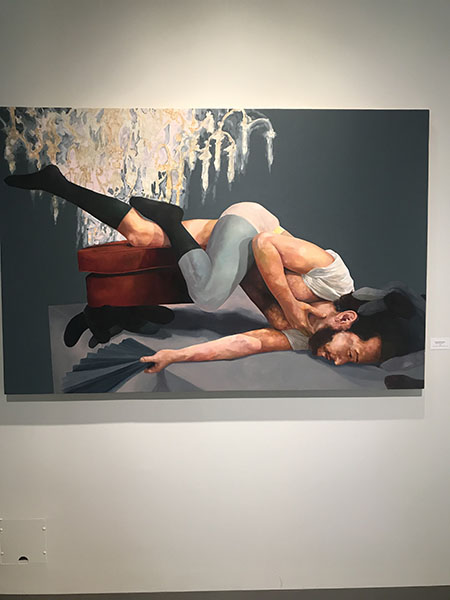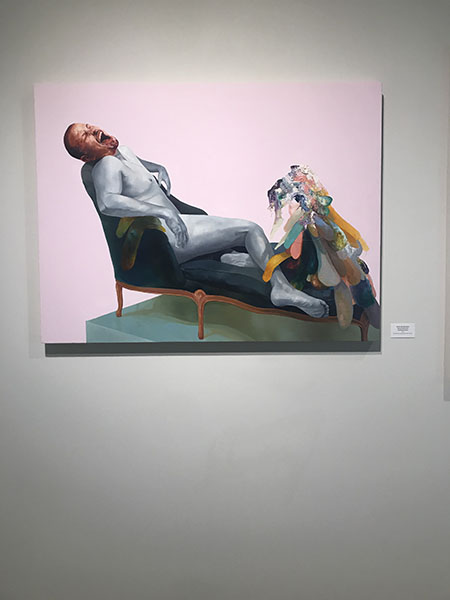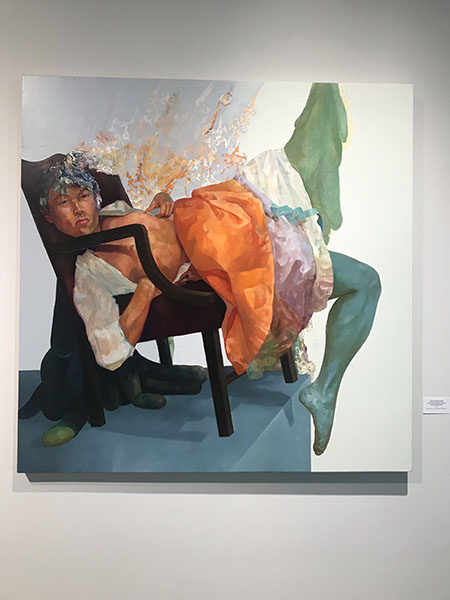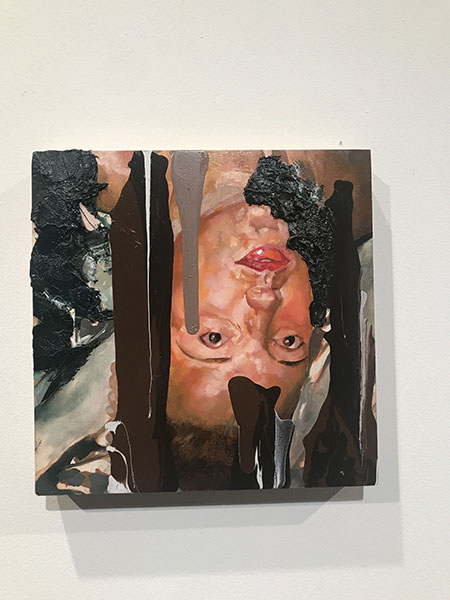- Apply
- Visit
- Request Info
- Give
Artist David Antonio Cruz presents as a part of Eastern’s ‘Future is LATINX’ exhibit
Written by Bobbi Brown
Published on October 19, 2020
On Oct. 8, the Art Gallery at Eastern Connecticut State University held an artist talk featuring multidisciplinary artist David Antonio Cruz, as part of their current exhibition titled the “Future is LATINX.” Cruz discussed his identity issues, childhood and culture, the racial violence in society and the different stages of his artwork. The “Future is LATINX” brings attention to the Latino population by featuring 15 artists who defy the myths and stereotypes that diminish their Latin American roots.
The exhibit will run until Dec. 3 and is a component of this year’s “Big Read” program. Eastern’s art gallery has partnered with the Willimantic Public Library, The Hispanic Alliance of Southern Connecticut and other community stakeholders to present the National Endowments for the Art’s Big Read program, which is designed to revitalize the role of literature in American culture and encourage people to read.
Cruz is a Latino artist who combines painting, singing, dancing, video and fashion to explore and express the visibility and intersectionality of black, brown and queer bodies. He has earned degrees from the Pratt Institute and Yale University, and has completed an artist development program at the Bronx Museum. He is currently a professor at the School of the Museum of Fine Arts at Tufts University where his specialty includes painting and drawing.
Born in Philadelphia to Puerto Rican parents, Cruz was raised in a traditional Latino household which he describes as being very religious to the point where it silenced him from expressing and talking about himself. He describes how this setback in his early life has obstructed his artwork: “I think of that silence as the thing that’s haunted my work and I think I’ve spent the last 15 years trying to break that silence.” This silence inspired Cruz’s first catalog of artwork titled “Jibaro,” which is the Puerto Rican word for a “Puerto Rican small farmer, rural worker, or laborer especially of mountainous regions.” This began his early work of painting the body, a topic that allowed Cruz to address stereotypes of masculinity. To view his oil on canvas paintings, visit http://www.cruzantoniodavid.com/the-country-annex.
Cruz strives to represent his Latin American roots in his artwork. In many of his paintings he emulates the architecture and traditional elements of the lavish houses in San Juan that he admired as a child and has even named some of these paintings after the streets they resided on.
Later in his artistic life, Cruz became interested in video production. He stopped painting the body and focused on locations, because he had longstanding issues of trying to find his place in society. “I just did not know where I belonged,” said Cruz. “I think about that idea of not being from here nor there and I’m constantly being asked ‘where are you from?’ The problem is not the question but the statement.”
Later in his presentation Cruz discusses the violence inflicted on queer and transgendered bodies and how he chose to represent that in a new light. The series of paintings is titled “Thereturnofthedirtyboys/girls,” which he says, “explores the timeless and timely intersections of queer identity, the gaze and navigation of space as a gender-fluid person of color.” After closely experiencing transgendered violence in his life, Cruz not only dedicated this series to a late friend, but also in response to “the amount of queer people and transgendered women that are being murdered and not talked about enough.” To view this series, visit http://www.cruzantoniodavid.com/new-page-1.
Cruz’s artwork has been featured at the Smithsonian National Portrait Gallery, El Museo del Barrio, the Bronx Museum of Art and more. His awards and fellowships include the Queer Mentorship Fellowship, the Urban Artist Initiative Award and more. To view Cruz’s website, visit http://www.cruzantoniodavid.com/new-cover-page.
To conclude the evening, Associate Provost and Associate Vice President of Equity and Diversity Stacey Close provided these insightful words: “Many of us know about the coming of the Latinx community and its ties to America, but what we don’t often recognize is the artistry that came with it and if we watch very closely we’ll see that.”
Eastern’s Art Gallery has many in-person and virtual events featuring Latin artists, poets, authors and activists. To view the schedule visit https://www.easternct.edu/big-read/events/art-gallery-events.html.





